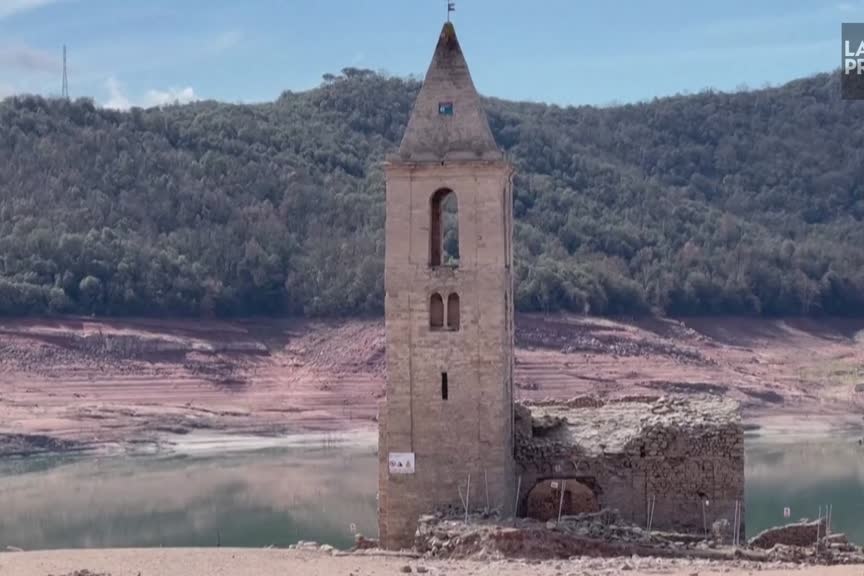(L’Espluga de Francolí) For several months, Maria Gonzalez has been storing water to deal with rationing in her small village in Catalonia, a region in northeastern Spain that is facing its worst drought in decades.
Every night between 10 p.m. and 7 a.m., the water is cut off in L’Espluga de Francoli, a town of 3,600 souls located about a hundred kilometers west of Barcelona, which must be supplied with water by a tanker truck.
If the supply problems have been structural for years in this village, due to the state of the water tables, the current drought has aggravated them.
“There is a clear effect of climate change […] which has evolved very rapidly over the past two or three years”, laments Xavier Rosell, municipal councilor in charge of the environment.
So the inhabitants are forced to adapt. “We store water in bottles to wash our faces and teeth in the morning,” explains Maria Gonzalez, a 24-year-old caregiver.
“And in the evening, we shower at work or at the gym” before returning “or we heat water in pots as before,” she adds, resigned.
Lowest reservoirs
Elsewhere in the region, populated by 7.7 million inhabitants, tap water has not been affected so far by the cuts for individuals.
But people in the most populated areas are prohibited from watering their gardens, while agriculture and industry have had to reduce their water use.
“This is one of the worst droughts in the last 50 years,” regional president Pere Aragonès, a moderate separatist, insisted last week.
Due to a lack of rainfall, reservoirs – which store rainwater so that it can be used in drier months – are at just 26% of their capacity in the region, according to local authorities.
The province of the Barcelona metropolis is the area most affected by this state of drought which has lasted for 32 months.
A symbol of this lack of water, the Sau reservoir (some 90 km from Barcelona), the drop in level of which caused the village church to reappear, submerged during the construction of this reservoir in the 1960s, is not more than 6.6% of its capacity.
In order to save the remaining water, the authorities poured it into a nearby reservoir and took out more than two tons of fish to prevent their death from lack of oxygen contaminating the water.
The water management in question
If Catalonia is, with Andalusia (south), one of the two regions most affected by the current drought, “we are in a difficult moment on the hydrological level” in the whole of Spain, insisted Tuesday the Minister of Agriculture Luis Planas, who convened for Wednesday a round table on the drought.
“Droughts caused by climate change are intensifying” in Spain, with rising temperatures causing greater evaporation of water, explains Narcis Prat, professor of ecology at the University of Barcelona.
According to the Spanish meteorological agency (Aemet), the volume of precipitation recorded since October has been 21% lower than the usual level for this period.
As in Catalonia, the reservoirs of Andalusia are at their lowest, those of the Guadalquivir river basin being at 25.2% of their capacity, according to figures published Tuesday by the Ministry of Ecological Transition. On average in the country, the reservoirs are at 50.7% of their capacity.
“The Mediterranean region is in a very worrying situation and must therefore adapt to other ways of managing water,” says Narcis Prat, moving from a model based on reservoirs, which depend on rainfall, to a another dependent on “other resources such as desalination units” or “reuse” of wastewater for irrigation.
A model towards which Catalonia wants to evolve, which has accelerated in recent months investments to create new desalination units or treatment plants.
